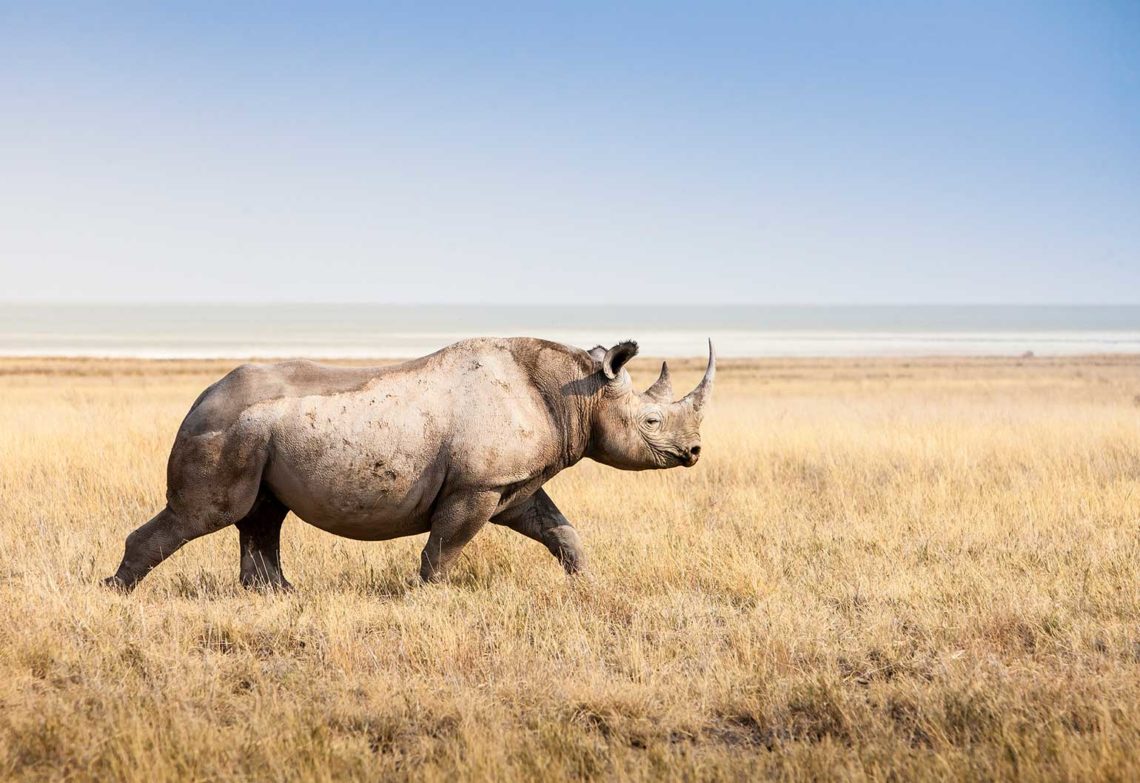COVID-19 lockdowns have seen a rise in rhino poaching, but new smart tracking software has joined the growing list of engineering approaches to try to save the species.
A software solution that reads the footprints of black rhinoceroses like human fingerprints is being deployed in Namibia to help tackle poaching.
Researchers from Duke University in the United States have developed interactive software, called the Footprint Identification Technique (FIT), which uses advanced algorithms to analyse footprints left by rhinos in the wild.
Running on JMP software from SAS, FIT works on the idea that each rhino’s footprint is as distinctive as a human fingerprint. An electronic archive in a global database of previously collected footprint images can then be searched for matching.
Zoe Jewell, co-creator of FIT and adjunct associate professor at Duke University’s Nicholas School of the Environment, said that it was a cost-effective approach to conservation.
“If you find a match, you can identify the individual animal who left the mark and, by plotting the locations of all the other places that mark has been seen, track its movements without disturbing it or coming into close enough contact with it for there to be a risk of animal-to-human viral transmissions,” she said.
“It’s a cost-effective approach that not only protects the health of the rhino and the human, but also brings a centuries-old tracking skill into the 21st century.”
The peer-reviewed research comes at a critical time for the estimated 5,500 black rhinos left in the wild. Conservation groups say that poaching of endangered species has been on the rise since COVID-19 lockdowns, with communities hard hit by the loss of tourism and government resources diverted to fight the pandemic.
“You essentially have these animals with horns worth $100,000 or more that disappear from sight into the Namibian backcountry, making them an almost irresistible target for poachers,” Jewell said.
“Authorities often don’t know a rhino that’s gone missing has been poached until they find its bones or carcass.”
FIT offers three levels of monitoring for everyone involved in the anti-poaching effort, from rangers in the field to scientists on different continents.
The simplest option compares the heel pattern on a digital image to images already in the FIT database to search for a match, allowing scientists to track random footprints found in the wild.
It can also survey footprints throughout a protected area and take measurements from each print to estimate the number of rhinos in that area, to help conservationists calculate and allocate resources.
In the most advanced application, an individual rhino can be tracked and matched to its unique footprint using both FIT and heel patterns. This creates an interactive library that anti-poaching patrols can use to search for animals at the highest risk, including those known to frequent areas under threat from poachers.
Other efforts
The FIT system follows other high-tech engineering solutions to battle poaching. In 2015, former tech executive Bruce “Doc” Watson founded Connected Conservation, a joint venture between Cisco and Dimension Data.
The organisation came up with a digitised security infrastructure called the Reserve Area Network (RAN), which supports trackers placed on vehicles entering a reserve, sensors installed beneath fences to detect guns and other metal objects, and wi-fi to alert rangers instantly to potential poachers.
It also allows staff to scan visitors’ passports and licence plates, as well as check their backgrounds against a national database of criminal records.
An approach to undermine the poaching market by bioengineering firm Pembient is using advances in genomic sequencing and DNA synthesis to make counterfeit rhino horn in laboratories, inspired by the way pirated software can destroy the makers of the original product.
In South Africa, British not-for-profit initiative Protect has implanted rhinos with heart rate monitors and embedded video cameras in their horns.
A radio collar sends an alarm and GPS coordinates to park officials whenever an animal’s heart rate jumps. The officials then dispatch rangers immediately to try and disrupt a poaching.
Sky Alibhai, Jewell’s FIT co-creator and adjunct associate professor at Duke’s Nicholas School, believes that the software won’t only benefit rhino populations.
“FIT is a distillation of the traditional ecological skills of the expert trackers who have lived and worked with in Africa for many years,” she said.
“Using FIT allows their skills to be used effectively in conservation. This can benefit whole communities.”



